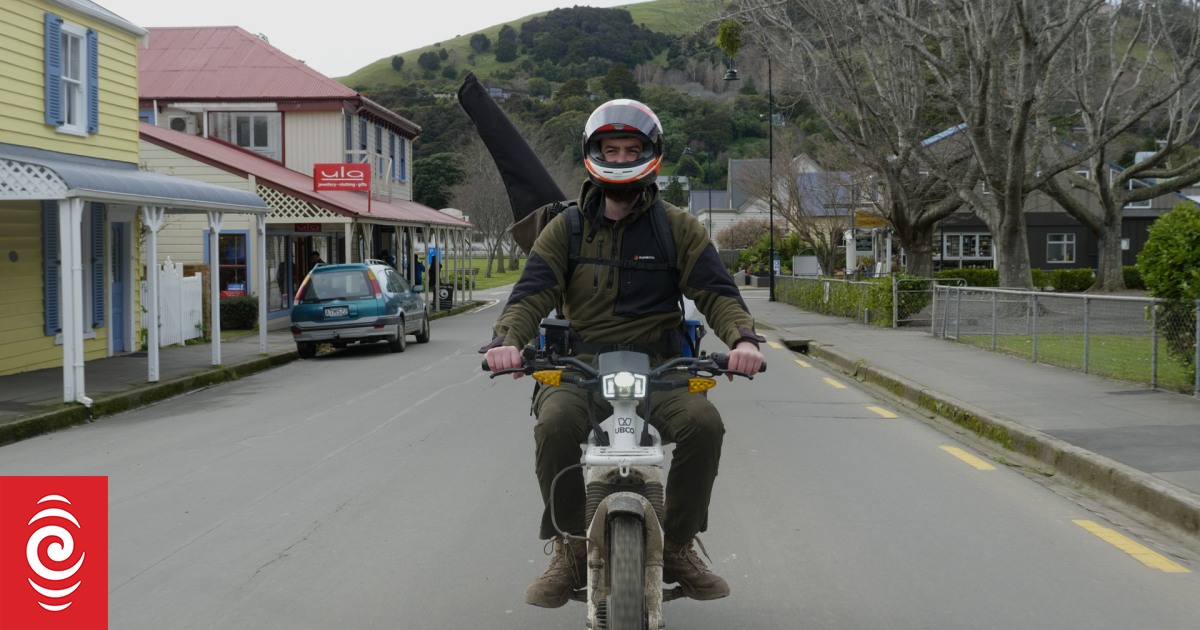by Sally Blundell for Frank Film
Dog versus hedgehog. In a suburban garden, victory would go to the one with the prickled armour.
On the dunes of Kaitōrete, the 25-km spit of windswept land separating Te Waihora/Lake Ellesmere from the Pacific Ocean on Banks Peninsula, the hedgehog doesn’t stand a chance. Minutes after being tracked down in the long grass by Nightshade the border terrier, it has been removed and shot.
“Hedgehogs seem very cute but they are in the wrong country and they eat anything here on Kaitōrete,” says Karin Bos, dog handler for Pest Free Banks Peninsula.
“Insects, lizards, eggs, tiny birds – they just hoover everything up they can find.”
Nightshade is part of an arsenal of dogs, traps, poison bait stations and cameras used by Pest Free Banks Peninsula to protect the biodiversity of Banks Peninsula Te Pātaka o Rākaihautū through the eradication of all animal pests by 2050.
For a piece of land without the water border of an island sanctuary or the predator-proof fence of a land sanctuary, it is a bold goal, first laid out in 2016 in the 2050 Ecological Vision for Banks Peninsula developed by the Banks Peninsula Conservation Trust in conjunction with the local community.
Two years later, Pest Free Banks Peninsula was formerly established by 14 founding signatories, including local councils, rūnanga and the Department of Conservation.
“We are amongst some others trying to do it for the first time, so we are all learning together,” PFBP project manager Sarah Wilson tells Frank Film. “Nobody knows how to do this.”
Banks Peninsula Te Pātaka o Rākaihautū is an ancient volcanic landscape, covering around 115,000 hectares of farmland, pockets of native bush, plantation forests, cliffs and beaches encroaching on the edges of Ōtautahi Christchurch.
It is a unique landscape rich with native flora and fauna including tūī, ruru (morepork), pīwakawaka (fantail), kororā (white-flippered little blue penguin), hoiho (yellow-eyed penguin, tītī (sooty shearwater), waterfowl, jewelled geckos and spotted skinks. At least six plant species and more than 60 invertebrate species, including the rare beaked moss moth, Gadira leucophthalma, do not exist anywhere else in the world.
Threatening this biodiversity are invasive populations of rats, mice, stoats, ferrets, weasels, hedgehogs, feral cats and an estimated 460,000 possums.
“When you look at possums and rats and stoats and everything else put together, the damage they do to the whole ecosystem is pretty significant,” PFBP operations manager Tim Sjoberg says.
“If you start reducing one native species versus another then you are really throwing the balance of the whole ecosystem out of whack.”
But the peninsula’s near-island topography is an advantage, allowing the eradication programme to move steadily from the coastal edges on the east and south towards the west, hopefully without losing advances to re-infestation.
To work within available funds, half of which comes from government company Predator Free 2050 Ltd, it is beginning in two elimination sites.
The appropriately named Wildside Project covers 23,000 hectares of steep gullies and towering sea cliffs on the southeastern corner of the peninsula. While aimed at feral cats, ferrets, stoats and weasels, its primary target is possums. Sjoberg takes Frank Film through the stunning beauty of the DOC-owned Nikau Palm Gully, pointing out trees etched with claw marks and saplings stripped of foliage. “The damage they do to the forest structure by eating the most palatable species, the absolute appetite for invertebrates and everything else – these guys have an impact on every cycle of the ecosystem.”
The eradication programme here relies on self-resetting battery-powered traps in more inaccessible areas, over 90 live capture traps laid on roadsides and in public parks and backyards and poison bait stations using encapsulated cyanide.
Unlike more remote eco-sanctuaries around the country, care is required around private dwellings, public walking tracks and water-take areas but in setting traps, checking trap lines and monitoring the area for reinvasion, community support, says Sjoberg, is vital.
“We are working in people’s backyards, on their farms – there is some public land but the bulk is private land so having that buy-in from the community is absolutely critical. In this country if you walk away from it without doing any control, you’ve lost all that work, all that mahi, you’ve done – they’ll be back.”
Sjoberg estimates the programme has already killed around 4000 possums over the last two years; cameras in 20 sites around this remote area show a dramatic decrease in possum numbers in the last six months alone.
“A few more to go but we are learning every day and we are accelerating every day.”
The other site is the 5000-hectare Kaitōrete Spit, where a programme of dogs (including Nightshade and Terry, the cat-sleuthing springer spaniel), cameras and self-reporting traps, which send a signal back to PFBP HQ in Tai Tapu when a trap is sprung, are being used to clear this wild finger of land from hedgehogs, feral cats, possums, ferrets, stoats and, most commonly, weasels, accustomed to dining out on the rich diet of birds, invertebrates, lizards and geckos.
Already about 45 hectares has been cleared of hedgehogs as the programme moves steadily eastward without reinvasion.
“Two years ago walking down the sand dunes you would never see anything,” says Sjoberg. “This last summer when we walked through there were lizards, geckos everywhere. We were able to see a change that quickly. It was quite phenomenal.”
The goal now, he says, is to bed in these gains and to extend further across Banks Peninsula Te Pātaka o Rākaihautū.
“If we are valued by the community, and we undertake this safely and professionally, then I am confident funding will come and we will be able to scale up and work across that landscape.”
Watch full story here.





















Discussion about this post